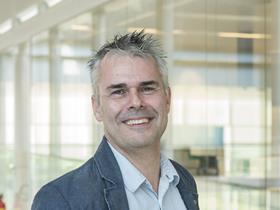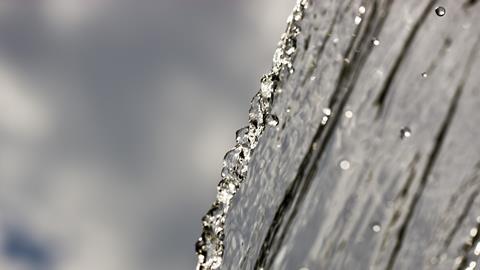Humans make more and more chemical compounds and they increasingly end up in the environment. That is why you need efficient approaches for detecting them in water samples. KWR Water Research Institute uses state-of-the-art high-resolution mass spectrometry (HRMS) to simultaneously examine as many substances as possible.
Water safety and quality are essential to the survival of all life on earth. To ensure this safety, you need to know what is in the water. In the past, this was easier to find out than it is now, because the diversity of substances in the water has increased enormously. ‘The Chemical Abstracts Service published in April 2021 that the 250 millionth unique chemical substance had been registered’, says Ton van Leerdam, researcher and project manager at KWR Water. ‘That is an unimaginable amount. In the EU, more than twenty thousand substances are registered under REACH. All of them have the potential to end up in the environment, and thus also in our drinking water sources. That makes monitoring so important.’

In addition to target screening, in which you look for specific substances, more and more use is made of non-target screening. Leerdam explains: ‘It is an ingenious combination of high-resolution mass spectrometry (HRMS, ed.), gas and liquid chromatography, and computer technology in the form of fast algorithms, which we have been working with at KWR for some fifteen years.’
Features
Non-target screening (NTS) works with so-called features. ‘A feature consists of a number of elements,’ Van Leerdam continues. ‘A substance is ionized in a mass spectrometer and fragments. To each of these fragments an accurate mass, a retention time and an intensity are assigned. The collection of these elements is called a feature.’
‘Last year the two hundred and fifty millionth unique chemical was registered’
Because of the complex samples you have to think carefully about your method of analysis. Van Leerdam: ‘There are two approaches within HRMS: suspect screening, in which you look at a list of substances that you expect to find, and non-target screening, in which you examine all the features discovered in a sample, or only the features above a certain threshold intensity.’ Software then looks at which substances could belong to the measured features by comparing them with data from existing databases. The data you collect in this way can be compared with substance libraries and saved for later.
Levels of confidence
‘Unfortunately, it is by no means always the case that you can directly link all the substances you find to library substances’, Van Leerdam admits. ‘It may be, for example, that you see a large peak that has no link with a known substance. But you can follow such an unknown peak, and with a bit of puzzling you may discover that it was a degradation product of a drug or something similar.’
The identification of substances can be divided into five levels of confidence (see image), published eight years ago in Environmental Science & Technology by Emma Schymanski and colleagues at the Swiss Federal Institute of Aquatic Science and Technology. ‘The lowest level, level 5, is when you have only measured the relevant accurate mass with HRMS’, says Van Leerdam. ‘The aim is to reach the highest level, where you confirm the accurate mass, fragments and retention time with a reference substance.’ This way you avoid false positive data.

Developments
The HRMS field has really emerged as a new science and continues to develop steadily, according to Van Leerdam. ‘In 2020 we started with the standardisation of NTS, together with NEN, the drinking water laboratories, Rijkswaterstaat and various suppliers of HRMS equipment. Last year, a Dutch Technical Agreement (NTA 8033, ed.) was published with the aim of achieving as many comparable results as possible in different labs.’
A practical development is the use of HILIC or mixed-mode liquid chromatography (MMC). With current chromatographic techniques, it is no problem to separate average polar to non-polar substances from your water sample. ‘But more polar, organic substances are often still a problem’, Van Leerdam continues. HILIC stands for hydrophilic interaction liquid chromatography and makes use of polar (hydrophilic) column material and a mobile phase that usually consists of a mixture of an organic solvent miscible with water and a small amount of water. This makes it possible to separate polar organic substances. MMC, on the other hand, makes it possible to separate on multiple interactions, allowing you to separate ionic, basic, acidic and neutral chemicals contained in a single sample.
There has been a lot of interest in PFAS in recent years. ‘It is an interesting group of substances for which HRMS and NTS play an important role’, Van Leerdam concludes. ‘It therefore remains crucial that we continue to work together across the industry to further develop and apply NTS and ensure the safety of our drinking water sources.’












